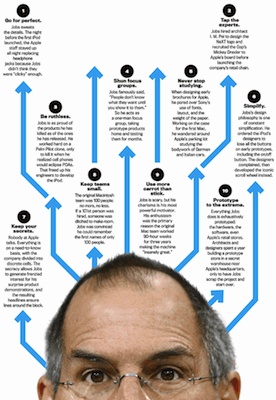Apple opens up replacement program for first-gen iPod nano
Apple has initiated a replacement program for the first-generation iPod nano due to issues with the device's battery overheating.
The Cupertino, Calif.-based iPod maker first acknowledged the issue in 2008, offering replacements to customers who experienced overheating. The defect prompted investigations from several international government agencies, including South Korea, Japan and Europe.
In 2010, the trade ministry in Japan ordered Apple to publicize the replacement offer on its Japanese website.
MacRumors reports that Apple began sending out emails to purchasers of the first-generation iPod nano on Friday, notifying them of the replacement program.
"Apple has determined that, in very rare cases, the battery in the iPod nano (1st generation) may overheat and pose a safety risk. Affected iPod nanos were sold between September 2005 and December 2006," the company wrote. "This issue has been traced to a single battery supplier that produced batteries with a manufacturing defect. While the possibility of an incident is rare, the likelihood increases as the battery ages."
The company now recommends that users stop using their first-generation iPod nanos and order a replacement. Customers can bring their iPod nanos an Apple Retail Store or an Apple Authorized Service Provider for help securing a replacement. They can also order a new unit via the web. Replacements will take approximately six weeks to arrive.

The fact that the likelihood of overheating increases over time explains why Apple chose to publicize the program now, more than six years after the first affected devices hit the market. iPod-related fire incidents have been reported since as early as 2005, though the Consumer Product Safety Commission ruled several years ago the the incidences weren't common enough to warrant a full recall.
Apple had previously said that less than 0.001 percent of first-generation iPod nanos experienced the overheating issue, but it has yet to indicate how much that percentage has increased over time.
Apple Lossless Audio Codec Project becomes open source
Apple this week made its Lossless Audio Codec project for high-quality audio files open source under the Apache license, allowing anyone to make their own ALAC files.
The ALAC audio codec was developed by Apple and is supported on the iPhone, iPad, Mac, iTunes and most iPods. Apple made the announcement this week that the project is now open source via the MacOS Forge website.
ALAC compressions reduces the file size of audio files, but as represented by its "lossless" name, the compressed files do not have any loss of information. Decoded ALAC files are identical to an original uncompressed audio file.
Lossless audio formats like ALAC, FLAC (Free Lossless Audio Codec), and WavPack are popular among audiophiles, as they retain the original quality of the recording while taking up about half the space of the original file.
The ALAC project made open source by Apple contains the sources for both the ALAC encoder and decoder, as well as an example command-line utility called alaconvert. With this, users can read and write audio data to and from original Core Audio Format and WAVE files.
ALAC files are stored within an MP4 container with the file extension ".m4a" -- the same extension used by the AAC format that most iTunes purchases are stored in. However, as a lossless format, ALAC is not a variant of AAC.

Available under the free Apache license, the ALAC sources allow users to use the software for any purpose, including modification and distribution. The license requires that any original copyright, patent, trademark and attribution notices in redistributed code be preserved, and notifications be provided for every licensed file that may have been changed.
ALAC has been a part of the Mac OS X Core Audio Framework, as well as iTunes 4.5 and QuickTime 6.5.1, since April of 2004. The format is also used for Apple's AirPlay wireless streaming technology.
orware spills its inks on your iPhone 4S, charges

You didn't think the latest iPhone would be saved from Colorware's paint-dipped hands, did you? Lo and behold, the company's swatches are currently ready for application on the 4S. Similar to its iPhone 4 treatments, you'll be able to spice up your device -- and its earbuds -- with a mixture of glossy, metallic and soft-touch coatings (excluding mainly the front face, which remains stock black or white). Colorware'll gladly sell you a fresh 16 or 64GB model for a whopping $1,500 or $1,700, respectively, or you can mail yours in to get a Benetton-esque makeover for just $250.
iPhone 5 Release Date Could Be October 14

A new report says that Apple is blacking out selected vacation days during the second week of October, strongly indicating that iOS 5, iCloud, and iPhone 5 are expected to be released that week. Specifically, AppleInsider learned that Apple “has in some locations blacked out vacation time for employees from October 9th through 12th and October 14th through 15th”.
More Evidence for an iPhone 5 Release on October 14 or 15
The October 15th date is particularly relevant because several weeks ago, French Telecom CEO Stephane Richard stated that the iPhone 5 would be “out October 15th”. Due to timezone differences, if the EU and US had corresponding release schedules, October 14 could also be the release date in the USA, which may explain why those dates are blacked out from the employees vacation calendar.
Building Evidence for an iOS 5 Release on October 10
Breaking down the blacked out dates of October 9th to 12th, AppleInsider cites three additional pieces of evidence that strongly suggest iOS 5 and iCloud will be made available on those dates:
- AppleCare is expecting an increase in iOS related call volume on Monday, October 10th
- Apple’s past release history shows an iOS update released several days prior to a new hardware launch
- A corresponding Twitter developer event with specific focus on iOS 5 is scheduled between Oct 10 and Oct 12
Similarly, a tipster with a fairly accurate track record, including the specific OS X Lion release date, suggested to OSXDaily via Twitter that Monday October 10th would be a date that some new Apple product or software will become publicly available. Separately, OSXDaily has learned that Apple has been ramping up hiring in their Austin, Texas call center over the past month to prepare for an increase in iCloud and iOS related inquiries.
Apple has only said that iOS 5 would be released in the ”Fall” of this year. While all of these specific dates remain officially unconfirmed and speculative, it’s widely accepted that the iPhone 5 will be announced on October 4th at an event led by CEO Tim Cook on Apple’s home campus, One Infinite Loop.
Latest uTorrent Alpha Has iOS Support…

The latest version of my favorite Bittorrent client uTorrent has a pretty cool new feature: iOS support. And while that doesn’t mean uTorrent’s coming to the App Store, it does mean you have a new and easy way to sync torrented content with your iPhone or iPad.
Although uTorrent’s new iOS support doesn’t allow you to torrent on your iPhone, it does mean that after you’ve used the desktop version of uTorrent to download a movie, the new 3.1 Alpha will convert that file to the best format for your device: MP4s.
Sadly, this functionality has only come to uTorrent’s Windows Alpha build right now, and apparently, its inclusion in the Alpha was an error: instead, this functionality will be rolled out to uTorrent in the future as part of a for-pay, premium version of uTorrent called uTorrent Plus.
That’s disappointing. uTorrent is famous for its minimalism, and as much as I like the idea of on-the-fly converting of torrents into iOS appropriate files, the idea of it being a paid upgrade really seems to me to be losing the plot.
The 10 Commandments of Steve Jobs [Infographic]

Newsweek’s The Daily Beast published an interesting infographic on Steve Jobs and his supposed playbook for managing the creative process at Apple.
The “10 Commandments of Steve” are:
- Go for perfect
- Tap the experts
- Be ruthless
- Shun focus groups
- Never stop studying
- Simplify
- Keep your secrets
- Keep teams small
- Use more carrot than stick
- Prototype to the extreme
Click on the image, visit NewsWeek, or jump below to see a larger version of the infographic and read the subtext.
It’ll be interesting to see how closely these ideals are followed now that Steve stepped down from the CEO position, but I’d bet things won’t change much at Apple for quite some time.

Relevance of Enterprise Mobile Application Development

Competition in the mobile application market has drastically increased over the past 18 months. Businesses recognize that the mobile platform can now be used as a viable tool to increase sales and improve customer satisfaction as well as a means to streamline internal operations. Without a plan to extend brand and simplify business operations through the use of mobile applications, a company will lose advantage in world rushing towards enterprise mobile. Now more than ever, enterprise mobile applications are imperative for a business that wants to grow and keep a competitive advantage.
Choosing the right company to develop enterprise mobile applications is crucial, and businesses are setting themselves up for disappointment when they trust a low-budget brochureware company to develop an application intended to increase sales figures. Smaller vendors can produce disposable applications that use fun gimmicks and appear flashy, but these applications are often used once and then forgotten about. Truly successful enterprise mobile applications are used time after time by consumers because they have a simple and efficient interface that works well and executes the service promised by the provider. For example, this Amazon.com application has been downloaded over 250,000 times, and in just one year it produced $1 billion for the company. Relying on small firms with questionable credentials to develop an enterprise mobile application is a sure bet for a letdown.
Integrating mobile applications with an enterprise system can save a company significant sums of money and increase worker productivity. A recent survey has shown that operational efficiency increases by 44% when a company provides an enterprise application to its employees. That kind of increase in productivity inevitably leads to boosted profits. Again, choosing the right company to develop these enterprise mobile applications is a critical decision. Do you want to leave part of your business“s future in the hands of a one dollar application developer who lacks any sort of professional experience? Because these brochureware companies have been known to create cheap and buggy applications, some security concerns exist with business-mobile integration. With proper development through a trusted and experienced team of mobile application designers, the risk of any kind of security malfunction is minimal.
Find a custom application application development company to meet the specific needs of your businesses. Larger companies with proven track records like Magenic can provide excellent mobile application development without fear of poor quality or security defects. Conversely, the decision to seek development from a small firm with suspect qualifications will undoubtedly bring about so-so results and possibly raise security issues. Make sure you choose the development company that will serve you best.
iPhone 5 Speculation
Some time this autumn, probably round about September, the new, keenly anticipated iPhone5 is expected to be released. What it will look like, and what kind of new technology will be included, has been the topic of discussions for months.
There are many ideas as to what this new model could turn out to be, and some of them have been put together in an attempt to predict the future of the iPhone5 in a style that Leonardo da Vinci himself might have dreamt up.
How Does Google+ Stack Up Against Facebook?

With Google+, the behemoth of Web search may have finally figured out social networking. Demand for Google+ invites is reportedly through the roof, and critics are generally pleased with how the service works.
But do we really need another social network? Can Google+ offer a service that Facebook does not? While you wait for the chance to see for yourself, take a look at this slideshow to learn how Facebook and Google+ compare.

Convert Flash SWF to HTML5 with Google“s Swiffy Tool

Swiffy is a new experimental tool from Google that easily converts SWF Flash files to HTML5, making Flash-only content accessible to hardware like the iPhone and iPad in just a few seconds. This should be a really useful utility for designers and it’s well worth a bookmark if you work with HTML5 and Flash content for the web or elsewhere.
Google explains how Swiffy works:
A SWF file is converted in two phases: the Swiffy compiler (which you can use on this website) processes the SWF file and generates a JSON file. A client-side JavaScript runtime loads that JSON file and renders it using HTML, SVG and CSS.
Swiffy conversion works best if you export Flash animations as Flash 5 files, and the output currently only works in Webkit browsers (Safari and Chrome, for example). The results are fairly impressive and Google included a small gallery showcasing a few examples including a converted ad unit and two simple games. I’d be really interested to see how this performs with more complex SWF files, I’m sure we’ll find that out soon enough.
The release of Swiffy from Google is kind of interesting and shows that HTML5 really is the future of web animation, and regardless of Google’s reasons this is a welcome utility for Mac and Apple users. It’s no secret that Flash is a pretty miserable experience on the Mac, which is exactly why Steve Jobs gave a big ‘no’ to including it on the iPad and iPhone. It’s also why we generally recommend using things like ClickToFlash, Click-to-Play, and to some extent even selectively using ad blockers, it just makes for a better web experience on the Mac, at least until HTML5 has finally pushed Flash the way of the dinosaurs.
